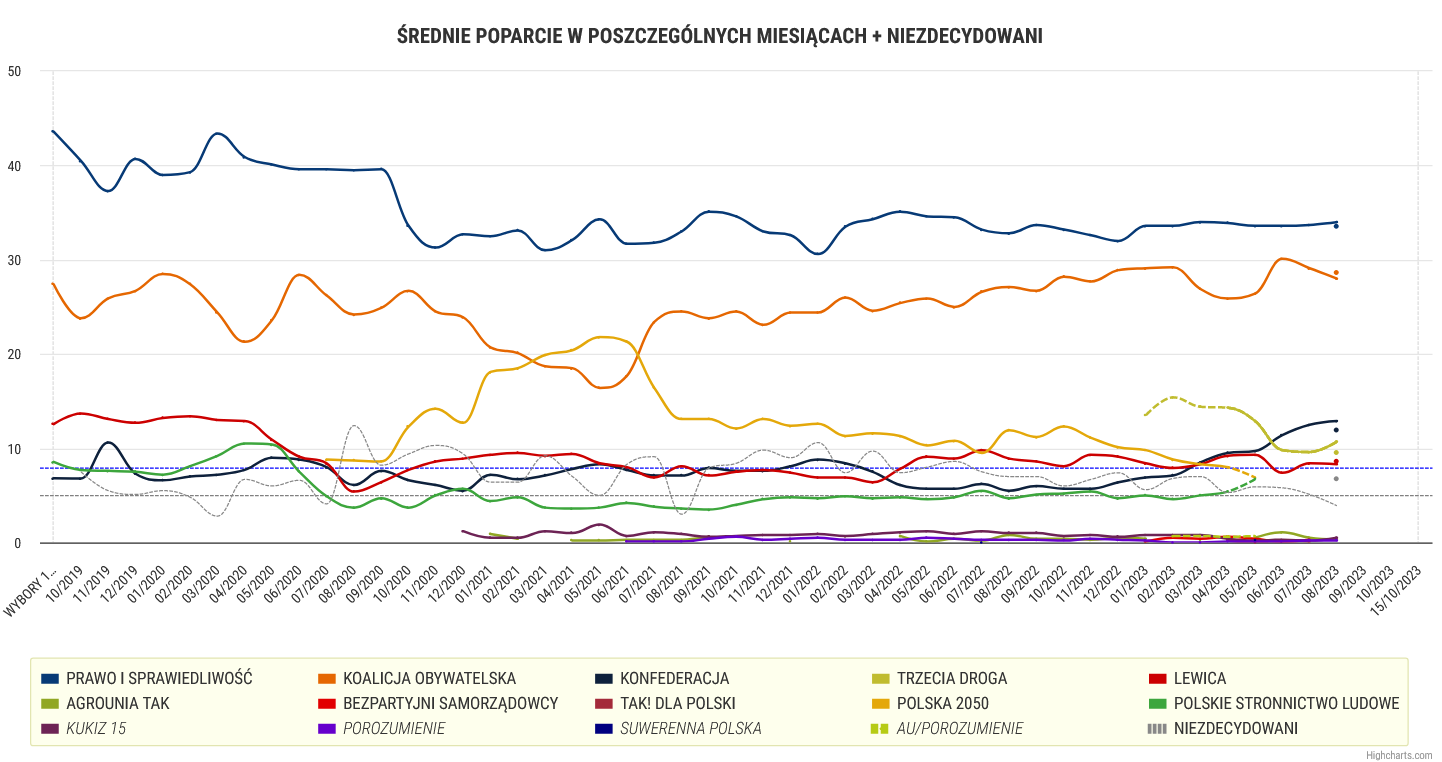Poland’s main opposition parties from centre-right to left have finalised an agreement not to stand candidates against one another in October’s Senate elections. A similar pact in 2019 helped the opposition win control of the chamber from the ruling national-conservative Law and Justice (PiS) party.
The plan was first announced in February, and since then the parties involved have been locked in negotiations over how many candidates each will stand for the 100 Senate seats and which districts each will contest.
“We have reached an agreement on all 100 districts,” announced Senator Zygmunt Frankiewicz, quoted by broadcaster TVN. But he added that there will still be some small updates to the arrangement ahead of the elections, which will be held on 15 October.
Pakt senacki demokratycznej opozycji dopięty! 🤍♥️ #PolskaWNaszychSercach #paktsenacki pic.twitter.com/eDg5Q2n0m5
— Monika WIELICHOWSKA (@MWielichowska) August 17, 2023
Among the candidates announced so far for 94 districts, 51 are from the centrist Civic Platform (PO), 20 from the centre-right Polish People’s Party (PSL), 15 from The Left (Lewica) and eight from the centrist Poland 2050 (Polska 2050).
Those candidates will compete in each district against candidates from PiS, the far-right Confederation (Konfederacja), as well as some from smaller parties and independents.
The selection of candidates was “guided primarily by optimisation and maximisation of the result of the opposition parties”, said Frankiewicz.
Pakt Senacki stał się faktem❗️Tak jak cztery lata temu idziemy wspólnie po zwycięstwo i demokratyczny senat ✌️#PaktSenacki #PolskaWNaszychSercach pic.twitter.com/WFtUQu0Xxz
— PlatformaObywatelska (@Platforma_org) August 17, 2023
In Poland’s parliament, the more powerful lower-house Sejm, where PiS still has a majority, is elected through proportional representation. That means that the number of seats each group gets is related to the overall percentage of the vote they receive nationally.
However, the upper-house Senate has a single-member district system, similar to those used in the US Congress and UK House of Commons. That means that each of the chamber’s 100 senators is elected as the sole representative of a geographical area.
The voting system for the Senate means that it is beneficial for parties opposed to PiS to stand a single joint candidate in each district rather than having multiple candidates who could take votes from one another, thereby allowing PiS to win.
United opposition candidate @FijoKonrad, supported by parties ranging from left to centre-right, has won the mayoral election in Rzeszów.
The race was seen as a key test of support, unity and strategy for both Poland's opposition and ruling coalition https://t.co/oailvUuJtv
— Notes from Poland 🇵🇱 (@notesfrompoland) June 14, 2021
Donald Tusk, the leader of PO, has long pushed for the opposition parties to stand on a single joint list in the Sejm elections too. However, other groups rejected that call and there will instead be three blocs: Civic Coalition (KO), led by PO; The Left; and Third Way (Trzecia Droga), an alliance of PSL and Poland 2050.
Current polling for the Sejm election shows PiS leading with 34%. That, however, is unlikely to be enough for the ruling party to retain the majority in parliament needed to govern independently.
PO is in second on around 29%, with Third Way on 10% and The Left on 8%. However, it is possible that even their combined share of seats may not be enough to form a majority. That could mean both the opposition and PiS being forced to turn to Confederation – running third on 13% – to help form a government.

Monthly average of support in polls for Poland’s main political groups (source: ewybory.eu)

Notes from Poland is run by a small editorial team and published by an independent, non-profit foundation that is funded through donations from our readers. We cannot do what we do without your support.
Main image credit: Robert Biedroń/Twitter

Daniel Tilles is editor-in-chief of Notes from Poland. He has written on Polish affairs for a wide range of publications, including Foreign Policy, POLITICO Europe, EUobserver and Dziennik Gazeta Prawna.



















